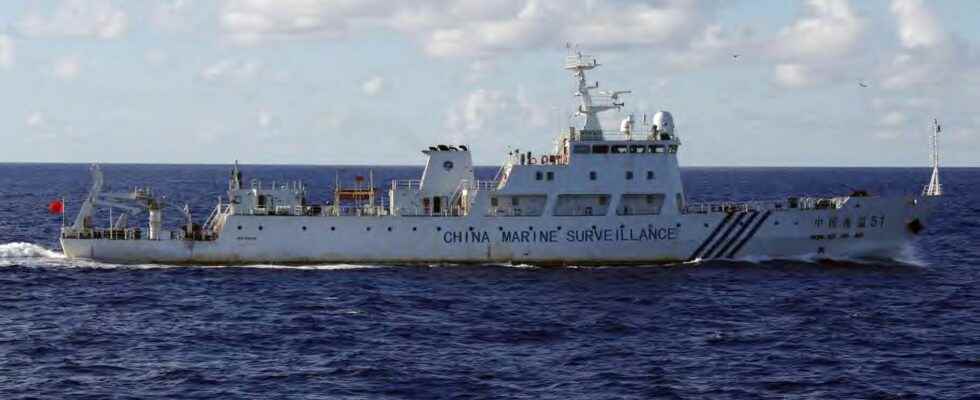“Strengthen naval cooperation between Russia and China” and “maintain peace and stability in the Asia-Pacific region”. This is, according to the Russian Defense Ministry, the main objective of the joint missile, artillery and anti-submarine warfare exercises organized with the Chinese navy this week. In a press release published on Monday, December 19, Moscow indicated that these maneuvers will take place between December 21 and 27 in the East China Sea.
According to the Ministry of Defense, Russia will deploy the missile cruiser Varyag, the frigate Marshal Shaposhnikov, as well as two corvettes. For its part, according to the Russian ministry, China will send two destroyers, two patrol boats, a supply ship and a diesel-powered submarine.
“Planes and helicopters from the (Russian) Pacific Fleet Air Force and the Chinese Navy will be employed in the drills,” he said.
Stronger ties amid conflict in Ukraine
Russia has been seeking in recent months to strengthen its ties with Asian countries, particularly China, in the face of Western sanctions taken against it following its offensive against Ukraine. Moscow and Beijing present themselves as a geopolitical counterweight to the United States and its allies.
This is not the first time that the Russian and Chinese military have trained. The two navies and air forces had launched joint maneuvers off Japan and South Korea for 13 hours in May, forcing the South Koreans to launch fighter jets as a deterrent, when US President Joe Biden was in Tokyo. Last September, the Chinese army took part in the “Vostok 2022” military exercises.
In addition, at the end of September, a US Coast Guard patrol reported spotting three Chinese navy ships sailing in formation with four Russian ships in the Bering Sea and in the United States’ exclusive economic zone. In late November, Russia announced that a squadron of Russian and Chinese strategic bombers had carried out an air patrol over the Sea of Japan and the East China Sea.
The major overhaul of the Tokyo Defense Doctrine
These naval maneuvers arouse the concern of neighbours, notably Japan. The Japanese government on Friday approved a radical revision of its defense doctrine in an attempt in particular to thwart Chinese military power, described by Tokyo as an “unprecedented strategic challenge” to its security.
Japan is thus planning, as part of the biggest overhaul of its defense policy in decades, to drastically inflate its military spending, unify its command and increase the range of its missiles. Although these changes are supported by Japanese public opinion, it is a major shift for this country whose pacifist Constitution, adopted the day after its defeat at the end of the Second World War, forbids it in principle to build a real army.
The Japanese defensive doctrine is outlined in three documents clearly referring to China, North Korea and Russia, which AFP consulted before its adoption. Regarding Russia, its “willingness to use force to achieve its own security objectives, as in Ukraine, is evident”, and its military activities in the Asia-Pacific region as well as its strategic cooperation with China “constitute a strong security concern,” the documents state.
